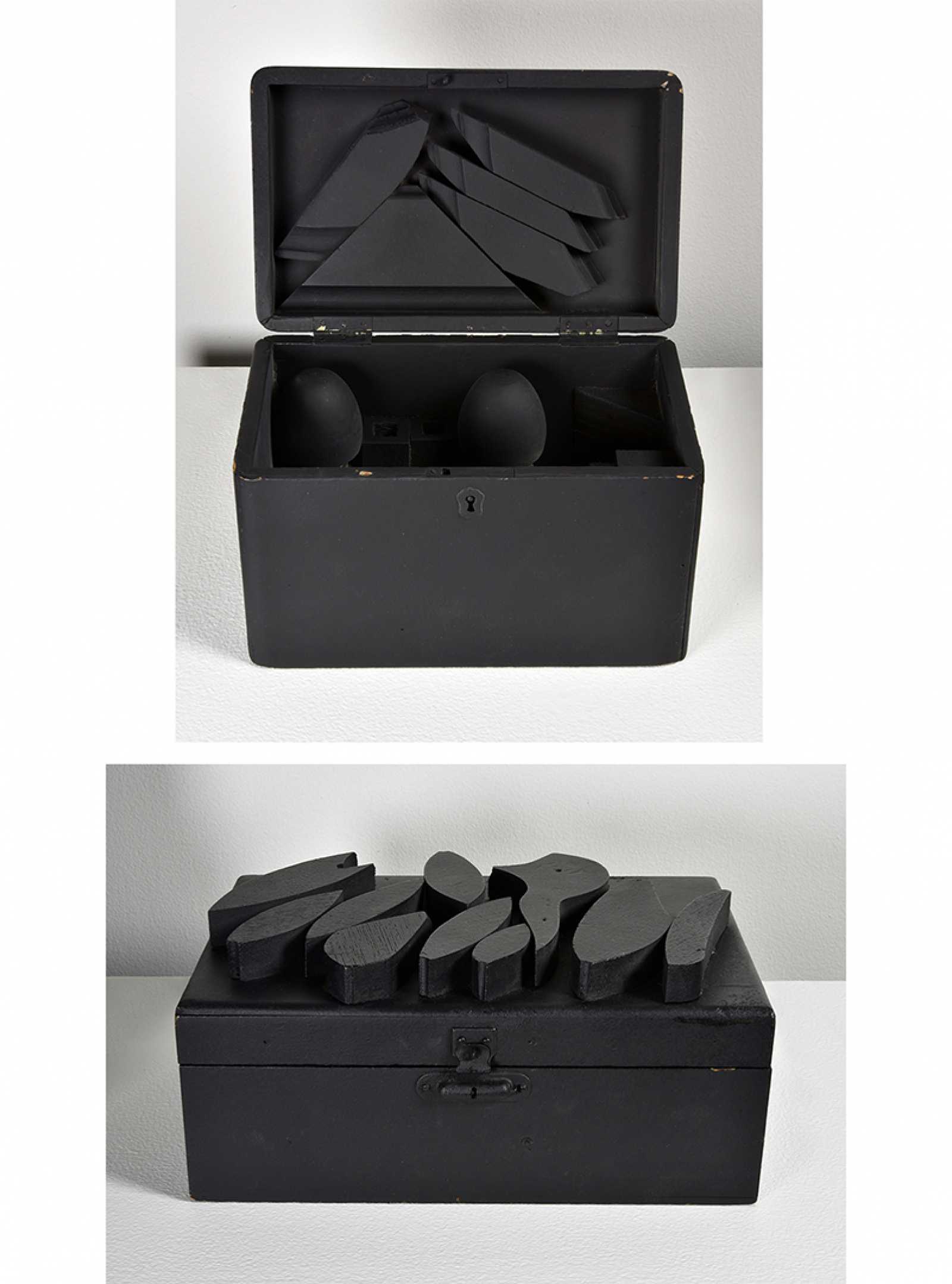Louise Nevelson
Louise Nevelson is best known for her large-scale, monochromatic, painted wood assemblages. These assemblages—made out of salvaged, mismatched wood—are unified and elegant in their depth and interior rationality. She assembled her works from found pieces of wood and other objects—anything that she felt had character—then arranged these abstract forms in shallow boxes and sprayed them with flat black (or sometimes white) paint.
She was born Leah Berliawsky in 1899 in a part of Ukraine that is now Russia. In 1905 her family immigrated to Maine, and she moved to New York City in 1922 after marrying the son of a wealthy businessman. With an ongoing interest in art, she began taking classes at the Art Students League in 1928, and traveled to Munich to study under Hans Hofmann in the early 1930s before returning to New York in 1932.
Nevelson’s work began attracting attention in the early 1940s. In the 1950s she began showing her work at galleries, including Martha Jackson and Pace Galleries in New York. Her work was critically favored, but not fully embraced or understood by the art market. In 1959, Nevelson’s work was shown in the Museum of Modern Art’s seminal exhibition, 16 Americans, which also included works by Jasper Johns, Frank Stella, and Robert Rauschenberg. The Whitney Museum of American Art held Nevelson’s first retrospective in 1967. By the 1970s, when Nevelson was in her seventies, she began receiving commissions for large, outdoor sculptures, which inspired her to work with new materials such as steel.
top image: Louise Nevelson (American, born Ukraine 1899-1988), Untitled (#9577), ca. 1970, black painted wood construction, 5 ½ x 8 3/8 x 5 3/8 inches. Bequest of Lura Gard Newhouse Family Trust, R2013-9.
bottom image: Louise Nevelson (American, born Ukraine 1899-1988), Rain Garden Cryptic XXXV, 1970, painted wood, 5 ¼ x 11 ½ x 7 ¾ inches. Gift of Neal Schenet, 24-2003.

